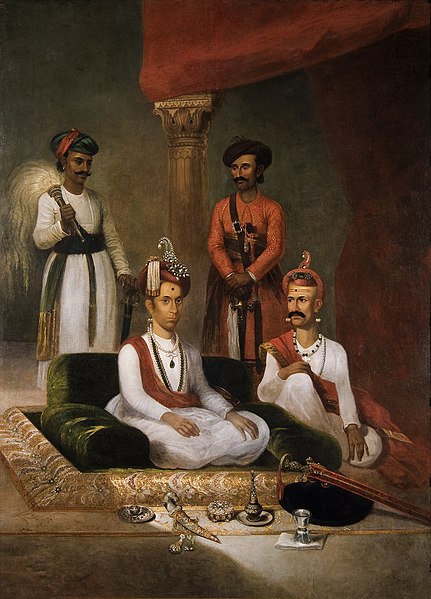The Chitpavan Brahmin or the Kokanastha Brahmin is a Hindu Maharashtrian Brahmin community inhabiting Konkan, the coastal region of the state of Maharashtra. Initially working as messengers and spies in the late seventeenth century, the community came into prominence during the 18th century when the heirs of Peshwa from the Bhat family of Balaji Vishwanath became the de facto rulers of the Maratha empire. Until the 18th century, the Chitpavans were held in low esteem by the Deshastha, the older established Brahmin community of Karnataka-Maharashtra region.
Chitpavan Brahmins practising Bodan, a rite performed on important occasions like birth or marriage
Peshwa Madhavrao II with Nana Fadnavis and attendants, at Pune in 1792
Bal Gangadhar Tilak
Marathi Brahmins are communities native to the Indian state of Maharashtra. They are classified into mainly three sub-divisions based on their places of origin, "Desh", "Karad" and "Konkan". The Brahmin subcastes that come under Maharashtra Brahmins include Deshastha, Chitpavan (Konkanastha), Saraswat, Karhade, and Devrukhe.
A Devghar (Household shrine) in a Marathi brahmin family. From Left traditional oil lamp (Niranjan), electric lamp, Image of Yogeshwari of Ambejogai (family deity or Kuldaivat), Image of Laxmi Keshav (Family deity or Kuldaivat), On the low bench from left, small statues of Goddess Annapurna, Ganesh, Balkrishna (crawling baby Krishna)
A Maharashtrian vegetarian meal with a variety of items





